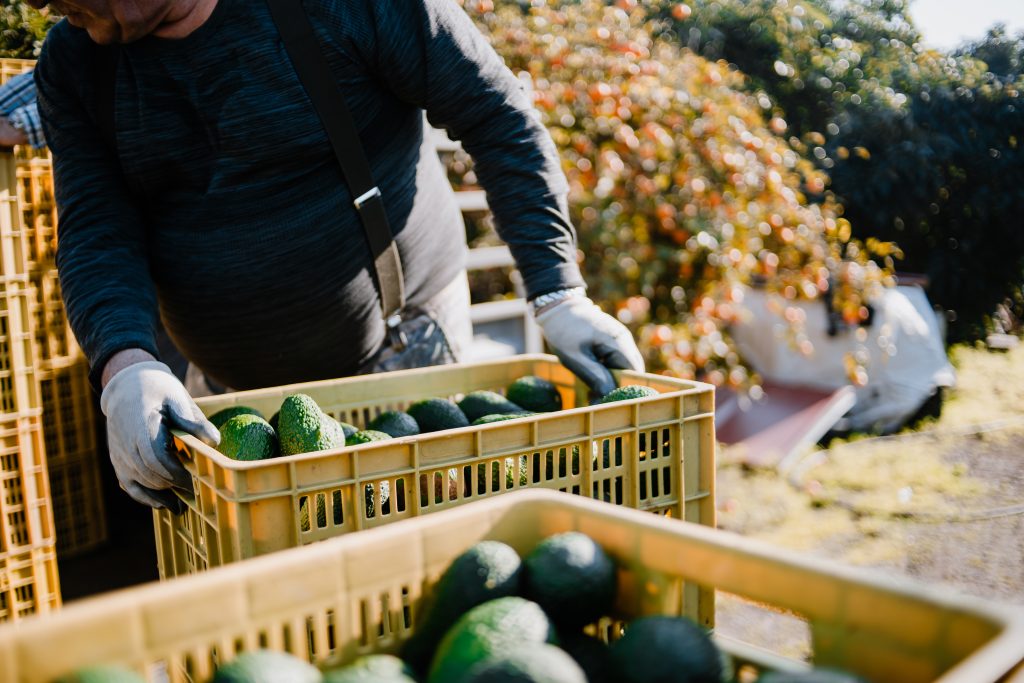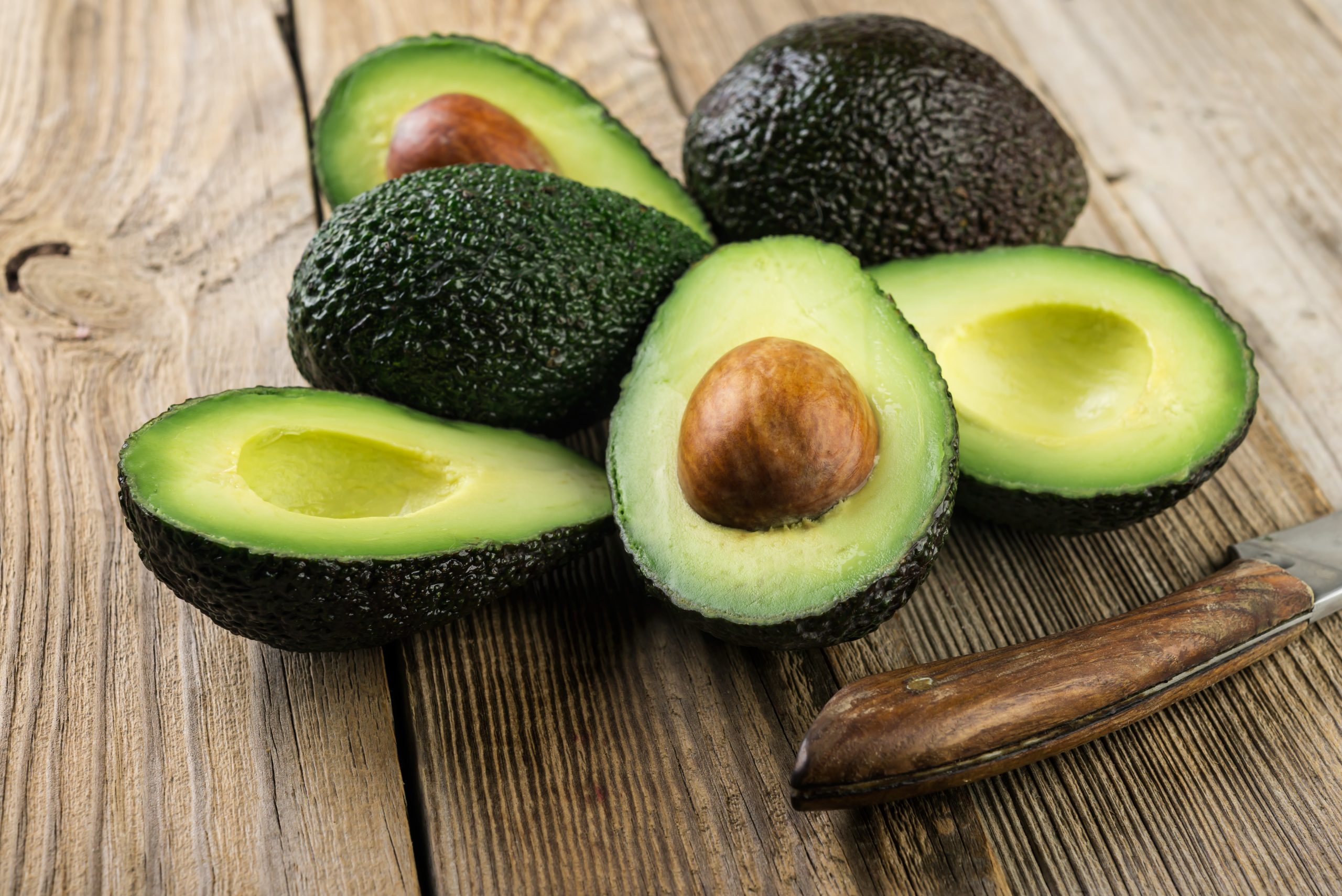Avocado is a fruit that has become incredibly popular in recent years due to its numerous health benefits and versatility in cooking. Its creamy texture and rich, nutty flavor make it a popular ingredient in everything from salads to smoothies.
Table of Contents
What is an Avocado?
Avocado (Persea americana) is an exotic variety of berries commonly used in culinary dishes for its creamy texture and nutty flavor. It is pronounced ah-vuh-kah-doh and is believed to have originated in Central America, specifically in the regions now known as Mexico and Guatemala.
Avocados are often green in color and oval or pear-shaped, with a large pit in the center. They are a unique type of fruit in that they are high in healthy fats, specifically monounsaturated fats, and low in sugar.
The flavor profile of an avocado is typically described as nutty, buttery, and creamy. It is commonly used in guacamole, sandwiches, appetizers, salads, and smoothies. Some popular dishes with avocados include tacos, tortillas, and guacamole.
The History of Avocados
Avocados have a long and ancient history, with evidence suggesting they were part of the diet of Mesoamerican peoples as far back as 10,000 years ago. Linguistic clues and cultural artifacts demonstrate the significance of avocados in these societies, including their inclusion in the Maya calendar and use as a tribute to rulers.
Avocado trees likely originated in Africa before spreading to North America and eventually making their way down to Central America. When the Spanish arrived in the Americas, they were intrigued by the fruit and its potential uses, leading to its spread worldwide.

What Does an Avocado Taste Like?
The avocado fruit has a unique flavor that is difficult to compare to other fruits or vegetables. When eaten raw, avocado has a buttery and creamy texture with a slightly nutty and mild taste. The taste is often described as rich, smooth, and earthy.
Avocado can be used in various dishes but is not typically cooked. Heating avocados can change their texture and flavor and makes them dry quickly.
When used in a dish like guacamole, the flavor of the avocado becomes more pronounced, and the texture becomes smoother, thanks to the other flavors that complement it.
It’s worth noting that there are different varieties of avocados, and their taste can vary slightly depending on the type. Some avocados have a more buttery texture, while others may be firmer and have a milder taste. Additionally, the ripeness of the avocado can affect its flavor, with ripe avocados having a more robust taste than unripe ones.
How to Tell When an Avocado is Ripe
Here are some tips to help you select the best avocados when shopping:
| Color | Color is not always a tell-tale sign. Some ripe avocado varieties can have lighter skin. |
| Texture | Look for avocados with unblemished, smooth skin. Avoid avocados with bruises or spots. |
| Firmness | Gently press the avocado with your fingertips. If it gives slightly, it is likely ripe. It is underripe if it feels hard; if it feels very soft or mushy, it is overripe. |
Note: Size doesn’t always matter when it comes to avocados. Instead, focus on how it feels and looks.
Cooking with Avocados
Avocados are versatile fruit used in various dishes, from guacamole to avocado toast, salads, sandwiches, and even as a substitute for butter or mayonnaise in baking recipes. Here’s a guide on how to prepare avocados and some ideas for using them in your cooking.
Preparing Avocados:
- Cut the avocado lengthwise around the seed, then twist the two halves to separate them.
- Remove the seed by gently prying it out with a spoon.
- Use a spoon to scoop out the flesh from the skin. Alternatively, cut in slices lengthwise and scop the cut slices afterward.

Avocados are used in traditional cuisines worldwide, including Mexican, South American, and Middle Eastern cuisine. Here are some popular avocado recipes:
Guacamole: This classic Mexican dish is a staple at parties and gatherings. It’s made with mashed avocados, diced onions, tomatoes, jalapeños, and lime juice.
Avocado and Shrimp Ceviche: This South American dish features diced shrimp and avocado marinated in lime juice, cilantro, and red onion.
Avocado Toast: This simple yet satisfying breakfast dish features mashed avocado over a slice of toasted bread. You can customize it with toppings like sliced tomatoes, poached eggs, or crumbled feta cheese.
Avocado Salad: This refreshing salad features sliced avocado, cherry tomatoes, cucumber, and red onion tossed in a lime and olive oil dressing. Try adding tropical fruits, like mangos, to add sweet notes to your dish!
Avocado fries: these avocado fries are just what the doctor ordered. They’re easy to make, they’re delicious, and they’re fun! The best part is that they’re totally customizable.
How to Store Avocados
If your avocado is not yet ripe, store it at room temperature until it ripens. Once mature, you can keep it in the refrigerator to extend its shelf life by up to a week. Freezing ripe avocados can extend their shelf life for up to six months.
It’s important to note that once an avocado is cut open, it will spoil quickly. To extend the shelf life of a cut avocado, wrap it tightly in plastic wrap and store it in the refrigerator. It’s best to use a cut avocado within a day or two.
Adding lemon juice to the avocado can help prevent browning, and cut avocados should be stored in the refrigerator and used within a day or two.

Nutritional Benefits of Avocados
Avocado consumption provides numerous health benefits that can contribute to a well-rounded diet. Here are some ways that avocados can promote good health:
| Potassium-Rich | Avocados contain high potassium levels, which help regulate nerve function and blood pressure. Consuming avocados can free the body of excess sodium, reducing the risk of high blood pressure. |
| Monounsaturated Fats | These fats can help lower LDL cholesterol levels, which can cause complications due to restricted blood flow. Thus, they are excellent against cardiovascular diseases. |
| Dietary Fiber | Avocados are an excellent source of fiber, which can help to increase feelings of fullness and promote healthy digestion. |
| Rich in Folates | The folates found in avocados are crucial for healthy brain function and can prevent congenital disabilities during pregnancy. It is recommended that women of childbearing age consume enough folate as part of their regular diet. |
| Vitamins | They are also a good source of vitamins and minerals, including vitamin E, vitamins K and C, pantothenic acid, niacin, potassium, and folate. They are great at fighting against heart disease. |
The Other Uses of Avocados
Eating avocados is not the only way to enjoy this fantastic fruit. Avocado oil and other avocado-derived products are commonly used in sunscreens, skin and hair products, and natural dyes.
Sunscreen
Avocado oil is a natural and effective sunscreen ingredient due to its ability to block harmful UV rays. Avocado oil is rich in antioxidants and fatty acids, making it an ideal ingredient for sunscreens. It also has a natural SPF of 15, which provides some protection against the sun’s harmful rays. In addition, avocado oil helps to soothe and moisturize the skin, making it an excellent ingredient for after-sun products.
Skin and Hair Products
Avocado oil is a popular ingredient in skin and hair care products due to its moisturizing properties. The oil is rich in vitamins A, D, and E and fatty acids, which help nourish and hydrate the skin and hair. Avocado oil is also known to help reduce inflammation and soothe irritated skin. Additionally, avocado oil can help to strengthen hair and prevent breakage, making it a great addition to hair care products.
Dyes
Avocado pits and skins can be used to create a natural dye. The pits and skins contain tannins, natural dyes that can be extracted by boiling them in water. Depending on the avocado used, the resulting shade will be a beautiful pink or peach color. The paint can color fabrics, yarn, and even paper.
Where to Purchase Avocados
You can find avocados in most grocery stores, as they are a staple item in many households. Look for them in the produce section, typically near the other types of fruits and vegetables. You can also find avocados in specialty stores focusing on healthy or organic foods. These stores may carry various avocados, including exotic or rare types.
In general, the best time of year to find avocados is during the summer and fall months. This is when most of the avocado harvest occurs, and the fruit is at its ripeness. However, some varieties of avocados can be found year-round, such as the Hass avocado, one of the most popular types.

